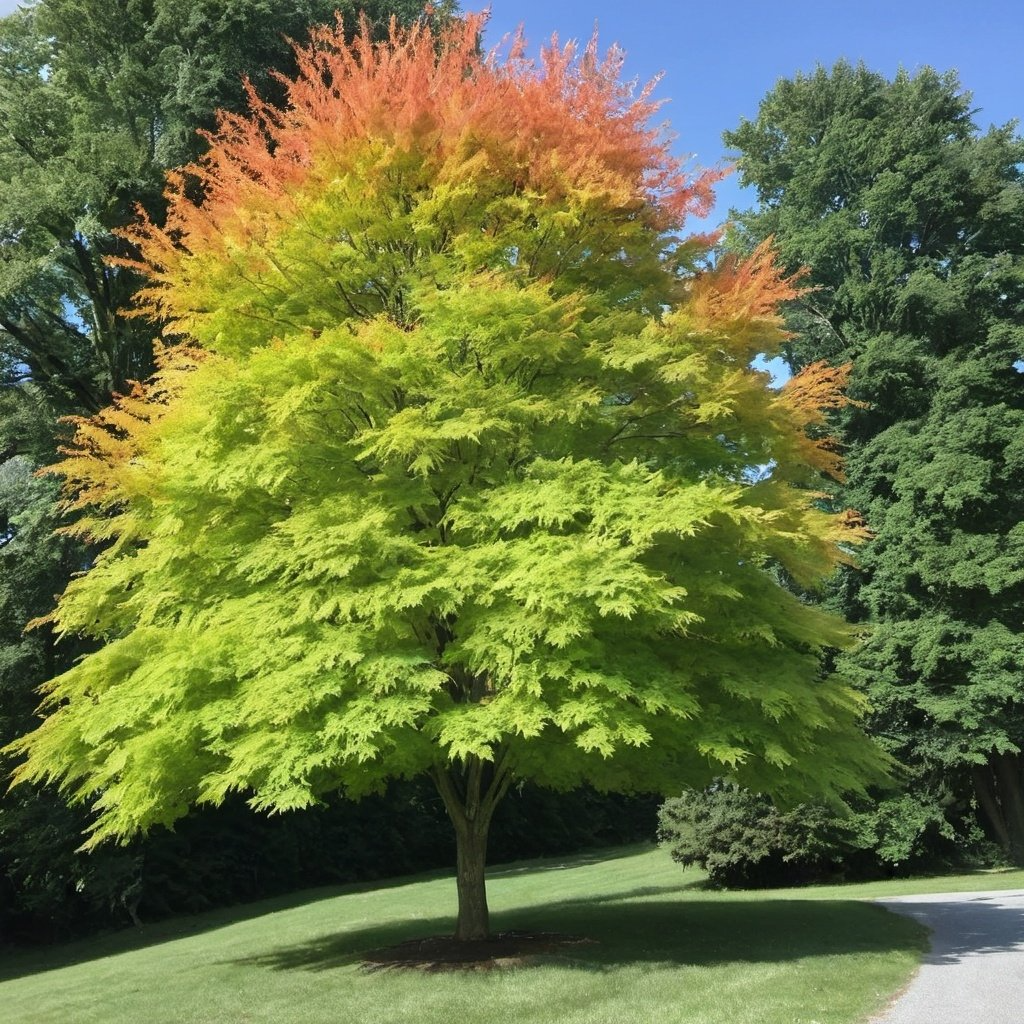David's Maple Tree Seeds
David's Maple Tree Seeds
Couldn't load pickup availability
David's Maple Tree Seeds
(Acer davidii)
Acer davidii, commonly known as David's Maple or snakebark maple, is a species of maple native to China. It's named after the French missionary and naturalist Father Armand David, who first introduced it to Europe in the late 19th century. This maple is known for its distinctive green and white striped bark, which resembles the skin of a snake, hence its common name "snakebark maple." It's often cultivated as an ornamental tree for its attractive bark and colorful autumn foliage.
Appearance: Acer davidii typically grows to a height of 10-15 meters (30-50 feet) with a rounded crown. It has distinctive green and white striped bark, which resembles the skin of a snake, giving it the name "snakebark maple."
Leaves: The leaves are opposite, palmately lobed with three to five lobes, and have serrated margins. They emerge light green in spring, mature to dark green in summer, and turn shades of yellow to orange-red in autumn, providing vibrant fall color.
Flowers: In spring, small yellow-green flowers appear in clusters. They are not particularly showy but add to the tree's appeal during the early growing season.
Fruit: The fruits are paired samaras (winged seeds), typical of maples, and ripen in late summer to early autumn. They are often referred to as "helicopter seeds" due to their characteristic spinning motion when falling.
Cultural Significance: Acer davidii is valued as an ornamental tree for its attractive bark and colorful foliage. It is commonly planted in parks, gardens, and larger landscapes for its aesthetic appeal and ability to tolerate various soil conditions.
Growing Conditions: It thrives in well-drained soil that is slightly acidic to neutral and prefers a location with full sun to partial shade. It is relatively hardy once established but benefits from regular watering during dry periods, especially when young.
Maintenance: Pruning is generally minimal and focused on shaping the tree when necessary. Regular mulching around the base helps retain moisture and insulate the roots.
Acer davidii is a beautiful addition to gardens and landscapes, prized for its unique bark pattern and seasonal interest.
Zones: 4 to 7
Stratification Requirement: Soak in water at room temperature 24 hours prior to stratifying. We recommend 21-30 days cold moist stratification
Planting Instructions:
Planting: After stratification, plant the seeds in pots or directly in the ground in early spring. Ensure the planting medium is well-draining but retains moisture. Plant the seeds at a depth of about twice their diameter.
Care: Keep the soil consistently moist but not waterlogged. Place the pots or planting area in a location with partial shade to full sun.
Transplanting: Once the seedlings have developed several sets of true leaves and are sturdy enough, they can be transplanted into larger pots or their final planting location.
Share


